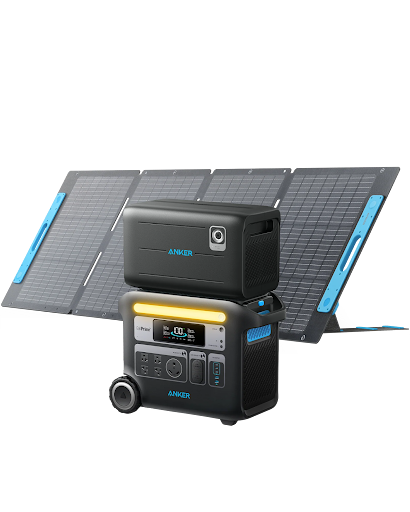Introduction to Solar Generators
The world is rapidly shifting towards renewable energy solutions, and solar power stands at the forefront of this change. Among the many innovations in the energy sector, the solar generator has gained significant popularity due to its ability to provide clean, sustainable, and portable power. Unlike traditional generators that rely on gasoline, diesel, or propane, a solar generator harnesses energy from the sun and stores it in a battery for later use. This makes it not only environmentally friendly but also cost-effective in the long run. In today’s world, where blackouts, outdoor adventures, and emergency preparedness are common considerations, solar generators have become a must-have for households, travelers, and businesses alike.
How Does a Solar Generator Work?
A solar generator operates on a fairly simple principle: it captures sunlight and converts it into electricity. The system typically consists of three main components: solar panels, a battery storage system, and an inverter. The solar panels collect sunlight and convert it into direct current (DC) electricity. This energy is then stored in the generator’s built-in battery. Finally, the inverter converts the stored DC power into alternating current (AC), which is the type of electricity used to run household appliances and electronic devices. The beauty of a solar generator lies in its silent operation, low maintenance, and ability to recharge continuously as long as sunlight is available. With advancements in technology, modern solar generators now come equipped with multiple charging options, including wall outlets, car adapters, and of course, solar panels.
Benefits of Using a Solar Generator
The popularity of solar generators is not without reason. One of the biggest benefits is that they provide clean and renewable energy. Unlike fuel-powered generators that emit harmful fumes and contribute to air pollution, solar generators operate with zero emissions. This makes them an eco-friendly choice for environmentally conscious users. Another major advantage is their quiet operation. Traditional generators are notorious for their loud engines, but solar generators run silently, making them ideal for camping trips, RV living, or simply powering devices at home without disturbing the peace. They are also cost-efficient in the long term. While the initial investment might be higher compared to conventional generators, the absence of fuel costs and minimal maintenance needs make solar generators a smart financial decision. Additionally, they are highly portable and versatile, capable of charging smartphones, laptops, medical devices, and even larger appliances depending on their capacity. For anyone seeking reliability, sustainability, and convenience, a solar generator is an excellent solution.
Types of Solar Generators
Not all solar generators are built the same, and choosing the right one depends on your specific needs. Broadly speaking, solar generators can be divided into portable solar generators and whole-home backup solar generators. Portable versions are compact, lightweight, and perfect for outdoor adventures, camping, or small-scale power requirements. They are designed to run small devices like phones, tablets, cameras, or lights. On the other hand, whole-home backup solar generators are larger, more powerful units designed to provide energy security during blackouts or emergencies. These systems can run major appliances such as refrigerators, televisions, and even air conditioning units for extended periods. Another distinction lies in battery type. Some solar generators use lithium-ion batteries, which are lighter, longer-lasting, and faster to charge, while others rely on lead-acid batteries, which tend to be cheaper but bulkier and less efficient. Understanding these differences can help users make a better purchasing decision based on their lifestyle, budget, and power needs.
Best Uses of Solar Generators
The applications of solar generators are wide-ranging, making them a versatile energy solution for different situations. For outdoor enthusiasts, they are an invaluable tool for camping, hiking, and RV living, providing power for cooking, lighting, and charging gadgets far away from the grid. In emergencies, a solar generator can be a lifesaver, keeping essential devices like medical equipment, phones, and radios powered during natural disasters or unexpected blackouts. Homeowners can also use them as a backup energy source to keep refrigerators, fans, and communication devices running when the grid fails. Businesses, too, are finding solar generators useful for powering remote worksites, outdoor events, and mobile setups without the need for noisy fuel-based alternatives. With their growing capacity and flexibility, solar generators are becoming a mainstream choice not only for individuals but also for industries looking to embrace renewable energy solutions.
Conclusion
A solar generator offers a compelling, future-ready answer to everyday and emergency power needs by combining silent operation, zero direct emissions, and steadily improving performance into a single, portable package. For homeowners, it brings peace of mind during grid outages without the fumes, fuel runs, or noise associated with gas units. For travelers and outdoor enthusiasts, it unlocks reliable electricity far from paved roads, letting essential devices, small appliances, and lighting stay online with nothing more than sunlight. The core value lies in its simplicity: panels harvest energy, the battery stores it, and the inverter delivers clean AC power when and where you need it. As battery chemistry advances and solar panel efficiency climbs, today’s capable systems will only become lighter, faster to charge, and more affordable. Whether you prioritize sustainability, cost savings over time, or sheer convenience, adopting a solar generator is less about chasing a trend and more about choosing a resilient lifestyle—one where your power is as renewable as the dawn and as dependable as the day’s first light.



